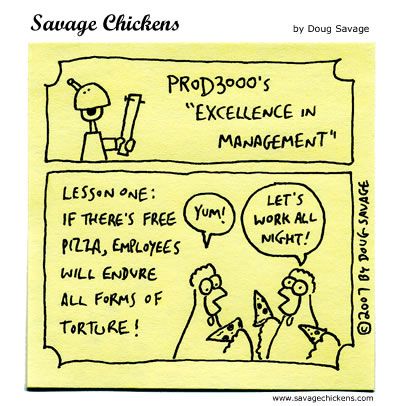As Baby Boomers move into their retirement years, they may be taking more than just their 401(k)s with them. Insider information and all the ‘tricks of the trade’ will retire with the Boomers, if companies don’t focus on transferring information to younger generations now.
The Baby Boomers are some of our country’s (and your company’s) longest running and most loyal employees. That time and loyalty has added up in the form of valuable corporate knowledge.
It’s estimated that by 2010, more than half of the U.S. workforce
will be over 40 years old. In order to give them a little more leeway and delay the knowledge gap, many companies are doing anything they can to hang onto their older employees. More than
60 percent of U.S. companies are bringing back retirees as contractors or consultants, according to a recent AARP study.
A recent
SHRM article examines how other companies are babying their Boomers to keep them working a little bit longer with health care benefits, flexible hours and guaranteed salary.
If keeping retirees on the job isn’t an option for your company, do your best to transfer the knowledge now. “
How to Beat the Baby Boomer Retirement Blues” from CIO.com examines how some big name companies like Rolls-Royce dealt with the brain drain. Using both a knowledge management system and an employee tracking map, companies can manage the knowledge transfer effectively.
First, develop a knowledge management system. You must be able to tackle two types of knowledge: explicit and tacit. Explicit knowledge can be stored in databases or manuals. Tacit knowledge includes ‘tricks of the trade,’ personal experience, stories and creative business solutions.
Work on documenting explicit knowledge. Do your best to have the retiring employee document all the information someone in their position would need to know. Establish “Standard Operating Procedures” in the form of manuals, stored on your network. These even come in handy when an employee goes on extended leave.
Tacit knowledge can be transferred by experience. Have the employee who will be taking over the retiring employee’s job to shadow that person for a time. More than learning the facts, the younger employee will learn the method.
Going forward, track employees and soon-to-be retirees. Keep a database of all of your employees. Document how long they have been with the company, in what positions or departments, and if known, when they plan to leave or retire. A map like this could help you plan ahead when hit with multiple retirements or if an employee plans to go on extended leave.
Don’t be afraid to pair younger and older generations together,
Harvard found that there's a "love fest" going on between the two. Gen Y and Baby Boomers generally like each other and enjoy learning from each other. Many times it is your Boomers who are the most
energetic and engaged at work. Get some of that energy and excitement to rub off by pairing Generation Y workers with older coworkers.
Companies should encourage Boomer/Gen Y work relationships, in order to be more proactive than reactive when the retirement rush comes around. Do your best to hang onto the valuable corporate knowledge that has built up over the years in your Boomer employees and don't let it slip down the drain when the go.

